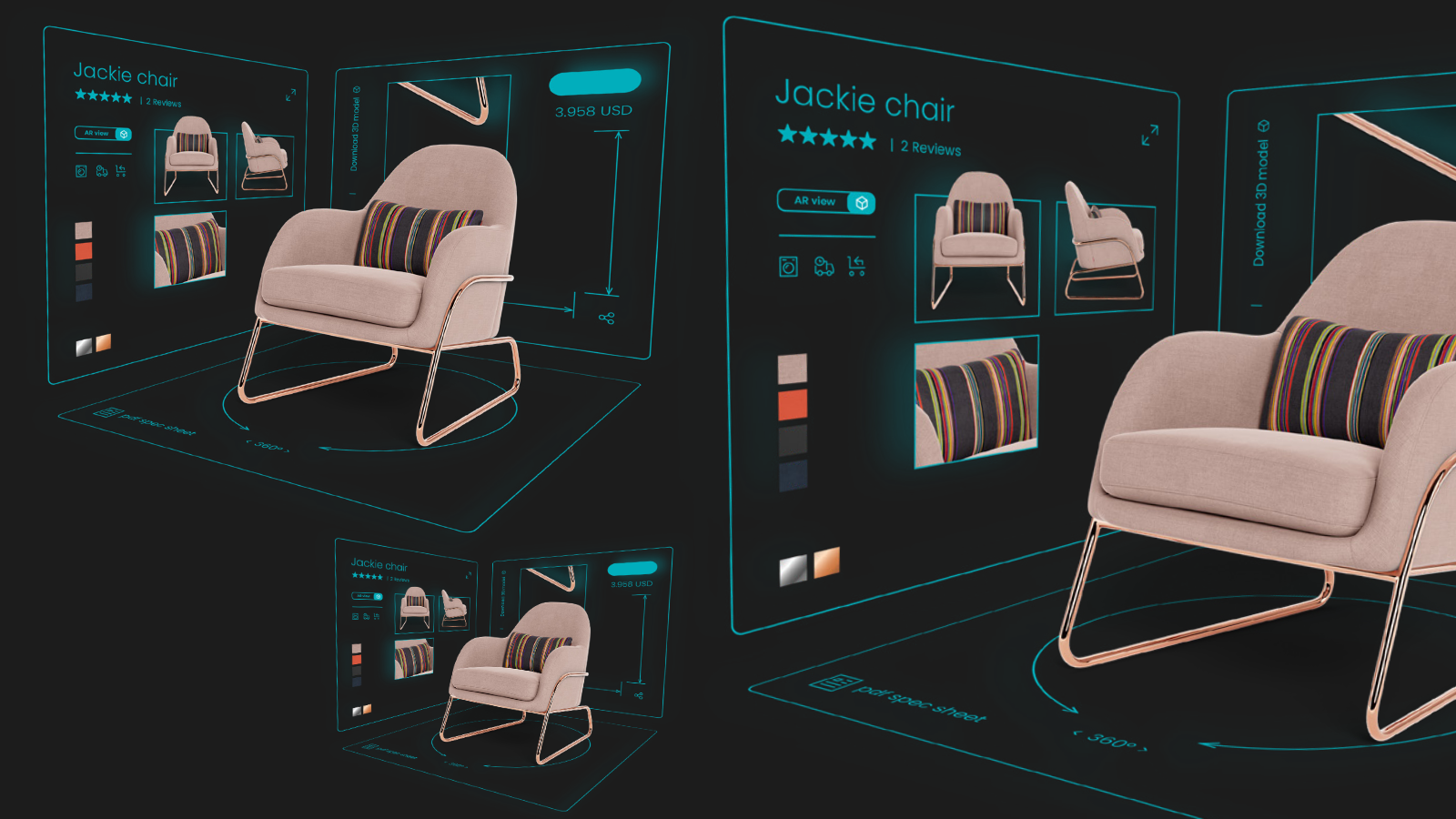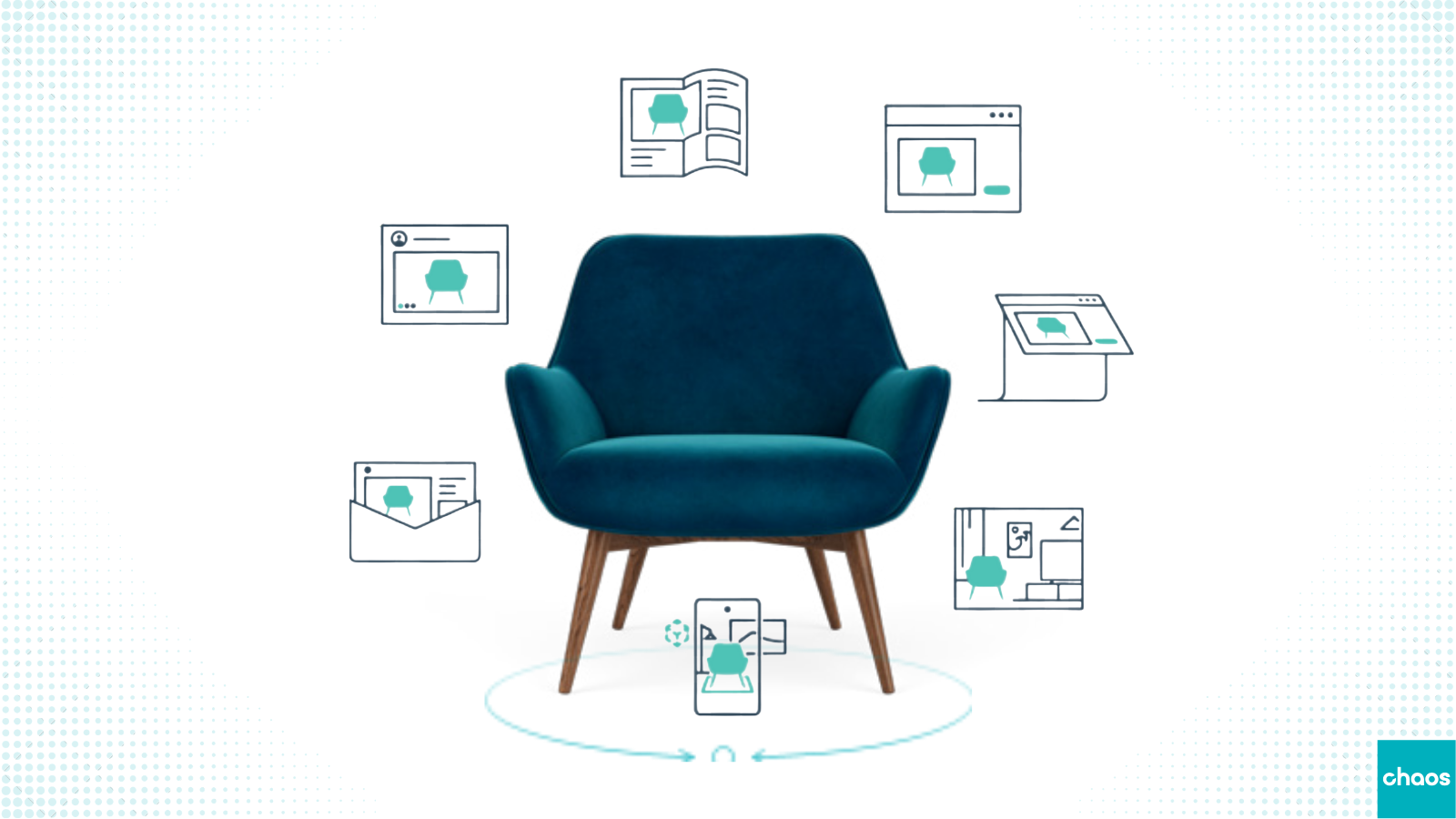The furniture industry is undergoing a transformation, driven by a shift in how consumers discover, evaluate, and purchase products.
At the center of this transformation is the visual economy, in which images and video aren't just supporting content but the primary driver of consumer behavior.
In the visual economy, a brand’s success increasingly depends on its ability to deliver high-quality, inspirational, and context-rich visuals that guide customers confidently through the buying journey. For some furniture retailers and manufacturers, adapting to this new reality will feel uncomfortable but is essential.
The visual economy: A new commerce paradigm
Modern consumers are visual by default. Studies show the brain processes images up to 60,000 times faster than text, and 90% of the information transmitted to the brain is visual. These numbers reflect a fundamental opportunity - currently not always exploited - in how consumers engage with products online.
Unlike when buying fast-moving consumer goods like paper towels or batteries, the far larger purchase of furniture involves personal style, emotional connection, and ensuring a new piece fits into an existing space in your home. That’s why visuals have become the main driver in the buying journey. Customers want to see how a piece looks in a room, imagine how it feels, and picture how it will add to their own homes.
Furniture shopping is unique — and visuals are the key
The furniture buyer's journey is long, nonlinear, and highly emotional. It's shaped by inspiration, hesitation, and the need for confidence. There are three core truths about how people shop for furniture today:
1. Customers begin with inspiration, not specifications
Shoppers often enter the journey without a clear idea of what they want. They browse for styles, colors, and room aesthetics, looking to visualize possibilities before narrowing down choices. This makes high-quality lifestyle imagery critical, especially in the early discovery phase. It helps spark ideas, build desire, and set expectations.
2. The decision process is extended and fragmented
Furniture is rarely an impulse buy. Customers may take weeks or even months to finalize a decision, revisiting products across multiple channels and devices. Inconsistent visuals between platforms can erode trust and stall progress. A consistent visual experience across all touchpoints builds continuity and confidence throughout the buyer’s path.
3. The buying decision is emotional and anxiety-prone
Furniture purchases are significant, both financially and emotionally. Shoppers are afraid of making the wrong decision. This fear of regret can create friction and even prevent purchases altogether. Visuals that show scale, material detail, and real-life context, from 360-degree views to AR placement and configurable 3D models, provide clarity and reduce doubt.
Standing out in a crowded market starts with visuals
The modern consumer is overwhelmed by choice. Whether shopping online or in-store, buyers face hundreds of similar options. In this crowded space, visual content becomes the primary tool for differentiation.
At every stage of the journey, from discovery on social media to comparison shopping on e-commerce sites, visuals influence whether a product is considered, shortlisted, or ignored. Brands that invest in compelling imagery, visual storytelling, and dynamic product visualization consistently outperform those that don’t.
Some of the most effective types of visual content include:- Eye-catching hero images that make people stop scrolling
- Lifestyle photos that show furniture in real-life settings
- Interactive 3D models and AR experiences that bring products to life
- Room scenes that show how pieces work together
- Customization tools that let shoppers play with colors, fabrics, and layouts
What data shows about the power of visualization
User research across various retail settings reveals consistent patterns. When presented with product pages, the vast majority of users focus almost exclusively on the image gallery. Product descriptions and technical details, while important, take a back seat to visual content — especially in the early and mid stages of evaluation.
Furthermore, data from physical retail environments shows that customers gravitate toward what they can see and touch. Even when multiple customization options are available, shoppers often default to what is on display. The takeaway is clear: customers trust what they can see. It reduces friction and simplifies decision-making.
Helping shoppers move from uncertainty to confidence
One of the biggest barriers to purchase in the furniture category is consumer uncertainty. In a world where buyers are flooded with options, the anxiety of choosing the "wrong" item often leads to decision paralysis.
This is where visual commerce solutions — such as configurable 3D models, AR placement, and dynamic room planners — play a pivotal role. They don’t just beautify the experience. They enable customers to understand scale, explore alternatives, and validate their preferences before committing.
Brands that empower customers with the tools to visualize and personalize are not only reducing returns — they’re increasing conversion, satisfaction, and lifetime value.
Looking ahead: Visual-first is the new standard
The shift to the visual economy is no longer just a trend but has become the new standard for retail success. For furniture brands and retailers, this means placing visual content at the center of the customer experience strategy.
From first impression to final click, every stage of the journey must be visually engaging, emotionally resonant, and frictionless. Retailers that embrace this shift will build stronger brand trust, deeper engagement, and ultimately, higher sales.
Curious how leading furniture brands are winning in the visual economy?
Watch the full webinar session to see how immersive visuals, digital tools, and storytelling are transforming customer experiences — and driving real business results.



